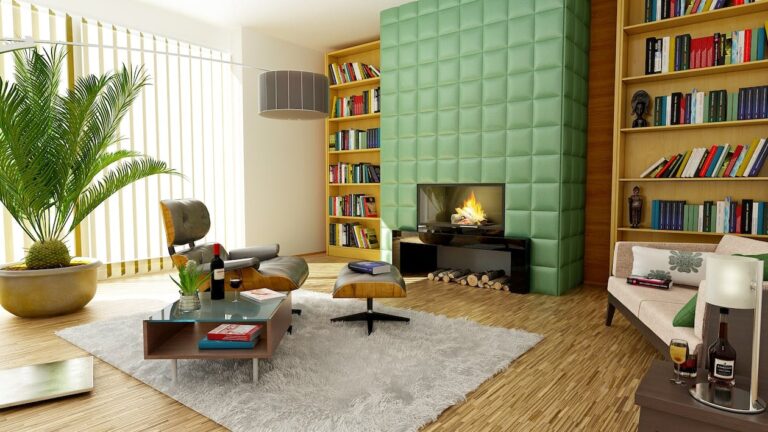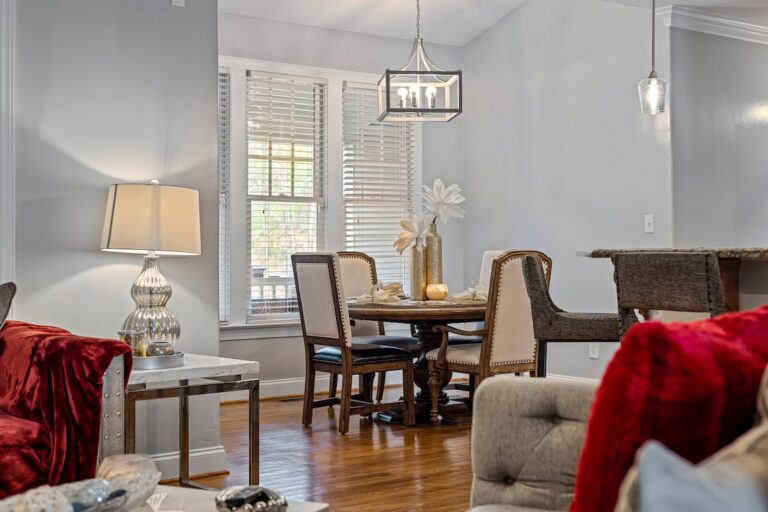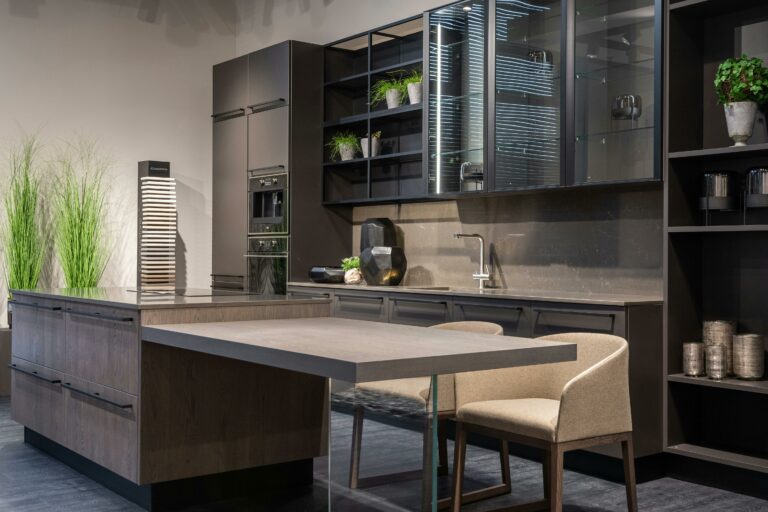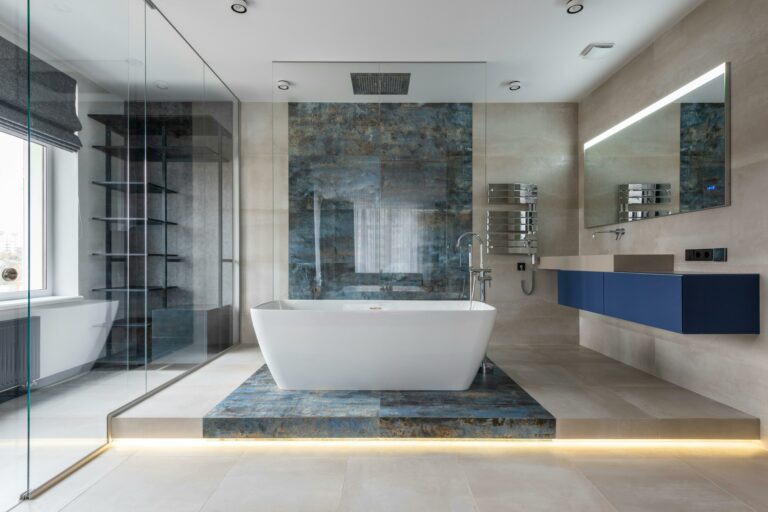Efficient Kitchen Layouts for Small Spaces: Maximize Functionality
Designing an efficient and functional kitchen layout for small spaces is crucial, especially when space is limited. Small kitchens can present unique challenges, but with the right approach, you can maximize functionality without sacrificing style. In this article, we will explore various kitchen layouts specifically tailored for small spaces. Whether you’re looking to renovate your existing kitchen or planning a new construction, these tips and ideas will help you make the most of your compact kitchen.
Small kitchens can often feel cramped and disorganized, making it challenging to prepare meals and entertain guests. However, with a well-designed layout, you can create a space that not only meets your practical needs but also reflects your personal style. From clever storage solutions to strategic furniture placement, there are numerous ways to optimize the efficiency of your kitchen while still maintaining aesthetics.
Table of Contents
Kitchen Layouts for Small Spaces

In this article, we will delve into the importance of kitchen layouts for small spaces and the impact they have on the overall design of your home. We will also explore different types of efficient kitchen layouts, such as the galley kitchen, one-wall layout, U-shaped kitchen, L-shaped kitchen, and island kitchen. Additionally, we will discuss practical tips and tricks to enhance functionality, including incorporating vertical space, using multipurpose furniture, optimizing corner spaces, and creative storage solutions.
To strike the perfect balance between functionality and aesthetics, we’ll also provide insights into incorporating design elements into your small kitchen. We’ll discuss choosing the right colors, lighting design, effective use of mirrors, and selecting appropriate appliances and hardware. By considering these factors, you can create a well-designed kitchen that not only serves as a functional workspace but also enhances the overall appeal of your home.
So, whether you’re working with limited square footage or want to revamp your small kitchen, you’ve come to the right place. Let’s dive into the world of efficient kitchen layouts for small spaces and unlock the full potential of your kitchen!
The kitchen is often considered the heart of the home. It’s a place where families gather, meals are prepared, and memories are made. But have you ever thought about the importance of the kitchen layout? It can have a significant impact on the overall functionality and efficiency of the space. In this section, we will explore why a well-designed kitchen layout is crucial for any home.
Efficiency and Functionality kitchen layouts for Small Spaces
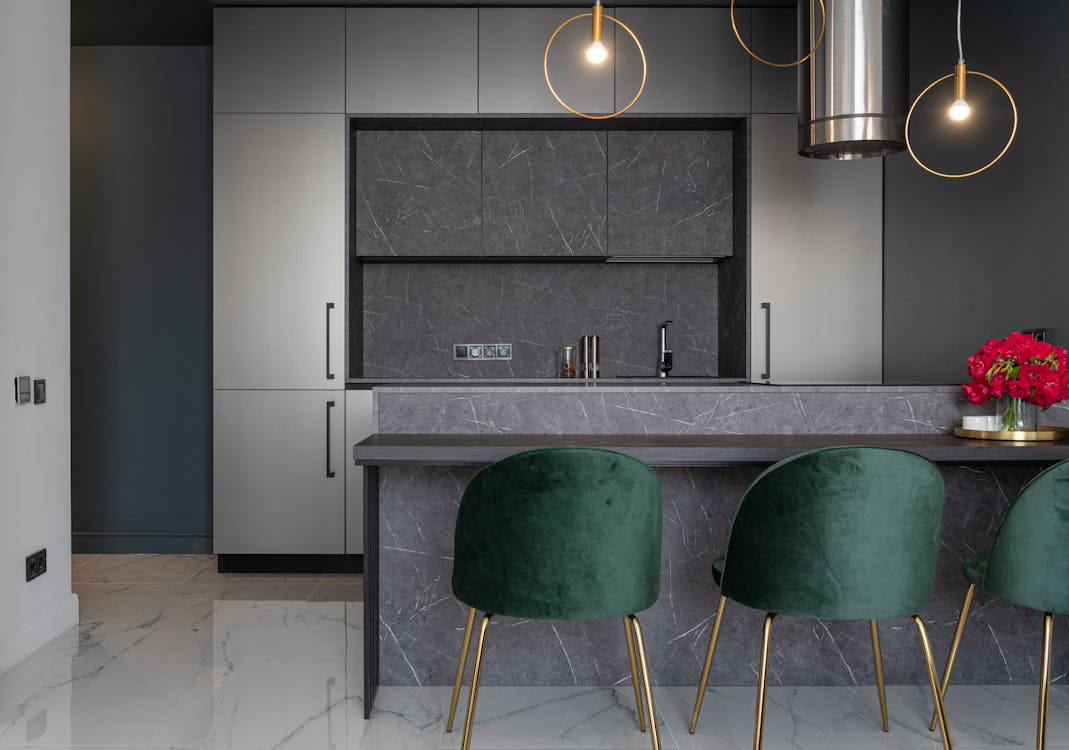
Small kitchens can present unique challenges when it comes to layout design. Limited space can make it difficult to navigate and work efficiently. However, with a well-thought-out kitchen layout, even the smallest of spaces can be maximized for optimal functionality.
Here are some ways enhance efficiency in well-designed kitchen layout for small spaces:
- Maximizing storage: By strategically placing cabinets, shelves, and drawers, you can make the most of every inch of your kitchen. Utilizing vertical space and incorporating clever storage solutions like pull-out pantries or corner cabinets can create additional storage options.
- Streamlining workflow: A well-planned kitchen layout takes into account the natural workflow of cooking. It ensures that the essential elements, such as the sink, stove, and refrigerator, are properly positioned to create a seamless cooking experience. This reduces unnecessary movement and saves time in the kitchen.
- Optimizing countertop space: Countertops are essential for food preparation, and having enough workspace is crucial. A well-designed layout ensures that you have ample countertop area for chopping, mixing, and prepping ingredients.
Impact on Overall Home Design
kitchen layout for small spaces not only affects the functionality of the space but also has an impact on the overall design of the home. It sets the tone for the rest of the house and can greatly influence its style and flow.
Here’s how the kitchen layout for small spaces can affect the overall home design:
- Open concept living: An open kitchen layout seamlessly integrates the kitchen with the living and dining areas. This creates a sense of continuity and makes the space feel more open and inviting. It’s perfect for homeowners who love to entertain and want to create a social hub in their home.
- Cohesive design: A well-planned kitchen layout ensures that the design elements, such as cabinetry, countertops, and appliances, work harmoniously together. It creates a cohesive look that enhances the overall aesthetic of the home.
- Resale value: A thoughtfully designed kitchen layout can greatly impact the resale value of a home. Potential buyers are often drawn to homes with functional and well-designed kitchens, making it a valuable selling point.
In conclusion, the kitchen layouts for small spaces plays a vital role in creating an efficient and functional space. Whether you have a small kitchen or a large one, a well-designed layout can enhance workflow, maximize storage, and contribute to the overall design of your home. It’s an investment that not only improves daily living but also adds value to your property. So, take the time to carefully plan your kitchen layouts for small spaces to create a space that works for you and your family.
Want to learn more about kitchen layout design? Check out this guide for expert tips and inspiration.
When it comes to designing a kitchen in a small space, efficiency is key. A well-thought-out layout can maximize functionality and make the most of every inch, enabling you to cook, clean, and entertain with ease. In this article, we will explore different types of kitchen layouts for small spaces that are perfect for small spaces. Whether you have a galley kitchen, a one-wall layout, U-shaped kitchen, L-shaped kitchen, or even an island kitchen, there are design solutions that can create an efficient and visually appealing space.
Galley Kitchen
A galley kitchen is characterized by two parallel walls with a narrow walkway in between. While this layout may seem limiting at first, it actually offers several advantages in terms of efficiency:
- Space optimization: With everything within arm’s reach, a galley kitchen allows for an efficient workflow, making it easier to prepare food and clean up afterwards.
- Minimalist design: The streamlined nature of a galley kitchen lends itself well to a minimalist design aesthetic. By keeping clutter to a minimum and maximizing storage options, you can create a clean and organized space.
- Enhanced safety: With fewer steps between work areas, a galley kitchen reduces the risk of accidents caused by navigating large distances with hot pans or sharp knives.
One-wall Layout
As the name suggests, a one-wall layout arranges all the kitchen elements along a single wall. This layout is ideal for small spaces where every square inch counts.
Here’s why a one-wall layout can be an efficient choice:
- Space-saving: With appliances, storage, and workstations all in a single row, a one-wall layout efficiently utilizes wall space, leaving the remaining areas open for other purposes.
- Easy access: With the entire kitchen along one wall, everything is within easy reach, minimizing the need for unnecessary movement and maximizing efficiency.
- Open and flexible: A one-wall layout creates a more open and flexible space, making it easier to incorporate dining or living areas into the kitchen if desired.
U-shaped Kitchen
A U-shaped kitchen consists of three walls of cabinets and appliances, forming a U-shape. This layout is popular for its ability to provide ample storage and counter space in a compact area.
Here’s why a U-shaped can be an efficient kitchen Layouts for small spaces:
- Optimal workflow: The U-shape ensures that everything is within easy reach, minimizing the need to move around the kitchen. This allows for a smooth and efficient workflow, whether you’re cooking, baking, or cleaning.
- Abundant storage: With cabinets and appliances on three walls, a U-shaped kitchen offers plenty of storage options, helping you keep your countertops clutter-free and organized.
- Enhanced functionality: The U-shape provides enough countertop space for multiple work zones, allowing multiple people to prep and cook comfortably at the same time.
L-shaped Kitchen
An L-shaped kitchen is created by arranging cabinets and appliances along two perpendicular walls, forming an L-shape. This layout is versatile and works well in small spaces.
Here are some reasons why an L-shaped kitchen can be an efficient choice:
- Maximized corner space: The L-shape allows for efficient utilization of corner space, which is often wasted in other layouts. This can be achieved by installing corner cabinets or incorporating a corner pantry, providing additional storage options.
- Open and airy: The open end of the L-shaped kitchen allows for easy flow of traffic, making the space feel less cramped. It also provides an opportunity to incorporate a dining area or an island for added functionality.
- Efficient work triangle: The L-shape creates an efficient work triangle between the sink, stove, and refrigerator, ensuring a smooth workflow for meal preparation.
Island Kitchen
An island kitchen is characterized by the addition of a freestanding counter or island in the center of the space. While it may seem counterintuitive to have an island in a small kitchen, it can actually enhance efficiency in several ways:
- Additional workspace: The island provides additional countertop space for meal preparation, allowing multiple people to work in the kitchen simultaneously without feeling cramped.
- Storage options: Islands often come with built-in cabinets, drawers, or shelves, adding much-needed storage space in a small kitchen. This can help keep countertops clutter-free and maintain a clean and organized space.
- Multipurpose functionality: An island can serve multiple purposes, such as a dining area, a breakfast bar, or additional storage, further maximizing the efficiency of the kitchen.
In conclusion, there are various kitchen layouts for small spaces that can maximize the efficiency of small spaces. Whether you opt for a galley kitchen, one-wall layout, U-shaped kitchen, L-shaped kitchen, or island kitchen, careful planning and thoughtful design choices can result in a functional and visually appealing space where you can enjoy cooking and entertaining with ease.
Transform Living Area into a Organized Oasis

In a world where living spaces are getting smaller and more compact, finding ways to enhance functionality has become increasingly important. Whether you’re living in a studio apartment, a tiny house, or just looking to make the most of your space, there are plenty of tips and tricks that can help you maximize every square inch. From incorporating vertical space to using multipurpose furniture, optimizing corner spaces, and finding creative storage solutions, this article will provide you with actionable ideas to transform your living area into a functional and organized oasis.
Incorporating Vertical Space
When floor space is limited, it’s essential to think vertically. By utilizing the height of your walls, you can free up valuable floor space and create a visually appealing environment.
Here are some ideas for incorporating vertical space:
- Floating Shelves: Installing floating shelves along the walls can help you display and store items without taking up valuable floor space. Use them to showcase your favorite books, plants, or decorative pieces.
- Wall-mounted Storage: Consider using wall-mounted storage solutions such as hooks, pegboards, or wall grids to keep items organized and off the floor. These can be particularly helpful in the kitchen or home office areas.
Using Multipurpose Furniture
Investing in multipurpose furniture is a game-changer when it comes to maximizing functionality in a small space. These versatile pieces serve multiple functions, saving both space and money.
Here are some examples:
- Sofa Beds: A sofa bed is a fantastic addition to any small living area. During the day, it provides comfortable seating, and at night, it can transform into a cozy bed for guests.
- Storage Ottomans: Ottomans that double as storage units are perfect for small living spaces. They provide a place to rest your feet while also offering hidden storage for items like blankets, pillows, or DVDs.
Optimizing Corner Spaces
Don’t let those awkward corner spaces go to waste! With a bit of creativity, you can transform them into functional and visually appealing areas. Here are a few ideas:
- Corner Shelves: Install corner shelves to display and store items like books, plants, or decorative trinkets. This not only utilizes the corner space effectively but also adds a unique touch to your living area.
- Corner Desks: If you’re working from home or need a designated space for studying, consider a corner desk. These desks fit neatly into corners and provide ample workspace without taking up much room.
Creative Storage Solutions
Storage is crucial when it comes to maintaining an organized and functional living area. Look for opportunities to maximize storage throughout your space. Here are a few creative storage solutions:
- Under-Bed Storage: Utilize the space under your bed by investing in rolling storage bins or utilizing bed frames with built-in storage drawers. This is an excellent space-saving solution for storing off-season clothing, extra bedding, or shoes.
- Over-the-Door Organizers: Over-the-door organizers are perfect for creating additional storage in small spaces. Hang one on the bathroom door to store toiletries, or on the pantry door to keep spices, snacks, or cleaning supplies within easy reach.
By incorporating vertical space, using multipurpose furniture, optimizing corner spaces, and utilizing creative storage solutions, you can enhance the functionality of your living area and create a space that feels larger and more organized. With these tips and tricks, even the smallest of spaces can become a functional and stylish place to call home.
When it comes to designing a kitchen in a small space, it’s not just about making it functional, but also aesthetically pleasing. Incorporating aesthetics into functionality is key to creating a space that is not only practical but also visually appealing. By paying attention to the colors, lighting, mirrors, and choice of appliances and hardware, you can transform any space into a beautiful and functional environment.
Choosing the Right Colors
Colors play a crucial role in setting the mood and atmosphere of a space. By choosing the right colors, you can create a visually appealing environment that complements the overall functionality of the space.
Here are a few tips for choosing the right colors:
- Consider the purpose of the space: Before selecting colors, think about the purpose of the room. For example, for a bedroom, soothing and calming colors like blues and greens may work well, while for a kitchen, vibrant and energizing colors like reds and oranges may be more appropriate.
- Think about the natural light: Natural light can have a significant impact on how colors appear in a space. Consider the amount of natural light the room receives and choose colors that will look good in that particular lighting.
- Create a color scheme: Instead of choosing random colors, create a cohesive color scheme for the space. Use a combination of main and accent colors to add depth and visual interest to the room.
Lighting Design
Good lighting design can make a world of difference in both the functionality and aesthetics of a space.
Here are a few considerations to keep in mind when it comes to lighting design:
- Layer the lighting: Instead of relying on a single source of light, such as overhead fixtures, consider incorporating multiple layers of lighting. Use ambient lighting for overall illumination, task lighting for specific activities, and accent lighting to highlight architectural features or artwork.
- Choose the right light fixtures: The choice of light fixtures can have a significant impact on the overall aesthetics of a space. Consider the style, materials, and finishes of the fixtures and choose ones that complement the overall design theme.
- Pay attention to natural light: Whenever possible, incorporate natural light into the space. Use curtains or blinds that allow you to control the amount of natural light that enters the room.
Effective Use of Mirrors
Mirrors are an amazing tool to enhance both the functionality and aesthetics of a space. Here’s how you can effectively use mirrors in your design:
- Create the illusion of space: Mirrors can make a room appear larger and more spacious than it actually is. Use large mirrors strategically to visually expand the space and create a sense of openness.
- Maximize natural light: Placing mirrors strategically can help reflect natural light and make the room feel brighter and more inviting.
- Add decorative elements: Mirrors come in various shapes and sizes, so don’t be afraid to choose ones that double as decorative elements. A unique mirror can become a focal point in the room and add a touch of elegance.
Choosing Appropriate Appliances and Hardware
Even the choice of appliances and hardware can impact the overall aesthetics and functionality of a space.
Here are a few tips to keep in mind:
- Consider the design style: Choose appliances and hardware that align with the overall design style of the space. For example, if you have a modern kitchen, sleek and minimalist appliances and hardware would be more suitable.
- Pay attention to finishes: The finishes of the appliances and hardware should complement the other elements in the room. Consider the color and material finishes to ensure a cohesive look.
- Prioritize functionality: While aesthetics are important, don’t forget about functionality. Choose appliances and hardware that not only look good but also perform well and meet your specific needs.
By focusing on these key aspects, you can successfully incorporate aesthetics into functionality and create a space that is both functional and visually appealing. Remember, a well-designed space not only serves its purpose but also brings joy and satisfaction to those who experience it.
Also Read : Streamlining Your Cooking Space: Minimalist Kitchen Ideas for Cooking
Conclusion
In conclusion, when it comes to maximizing functionality in a small kitchen space, there are several efficient layouts to consider. These layouts, such as the galley kitchen, one-wall layout, U-shaped kitchen, L-shaped kitchen, and island kitchen, offer different advantages in terms of efficiency and functionality.
Implementing certain tips and tricks can further maximizing functionality in a small kitchen space. Incorporating vertical space, using multipurpose furniture, optimizing corner spaces, and employing creative storage solutions are all effective strategies to make the most of the available space.
While functionality is crucial, aesthetics should not be overlooked in small kitchen designs. Choosing the right colors, implementing a well-thought-out lighting design, making effective use of mirrors, and selecting appropriate appliances and hardware can all contribute to creating a visually appealing and functional space.
By combining efficient kitchen layouts, smart storage solutions, and stylish design elements, homeowners can create a small kitchen that not only meets their functional needs but also reflects their personal style and taste.
Remember, a small kitchen doesn’t have to mean sacrificing functionality or style. With careful planning and thoughtful design choices, even the tiniest kitchen can become a functional and inviting space to cook, entertain, and enjoy time spent with loved ones.
So why wait? Start exploring different kitchen layouts and get inspired to transform your small kitchen into a space that maximizes both functionality and aesthetics. Happy designing!
Frequently Asked Questions
- What are some efficient kitchen layouts for small spaces?Some efficient kitchen layouts for small spaces include the L-shaped layout, U-shaped layout, galley layout, and a single-wall layout.
- How do I maximizing functionality in a small kitchen space?To maximize functionality in a small kitchen, consider using vertical storage, utilizing multifunctional furniture and appliances, maximizing counter space, and utilizing smart organizing solutions.
- What are some space-saving storage solutions for a small kitchen?Some space-saving storage solutions for a small kitchen include installing shelves or racks on the walls, using stackable containers, utilizing a magnetic knife strip, using cabinet organizers, and hanging pots and pans.
- Is it possible to have an island in a small kitchen?While it may be challenging to fit a traditional Designing an efficient and functional kitchen layout for small spaces is crucial, especially when space is limited. Small kitchens can present unique challenges, but with the right approach, you can maximize functionality without sacrificing style.


